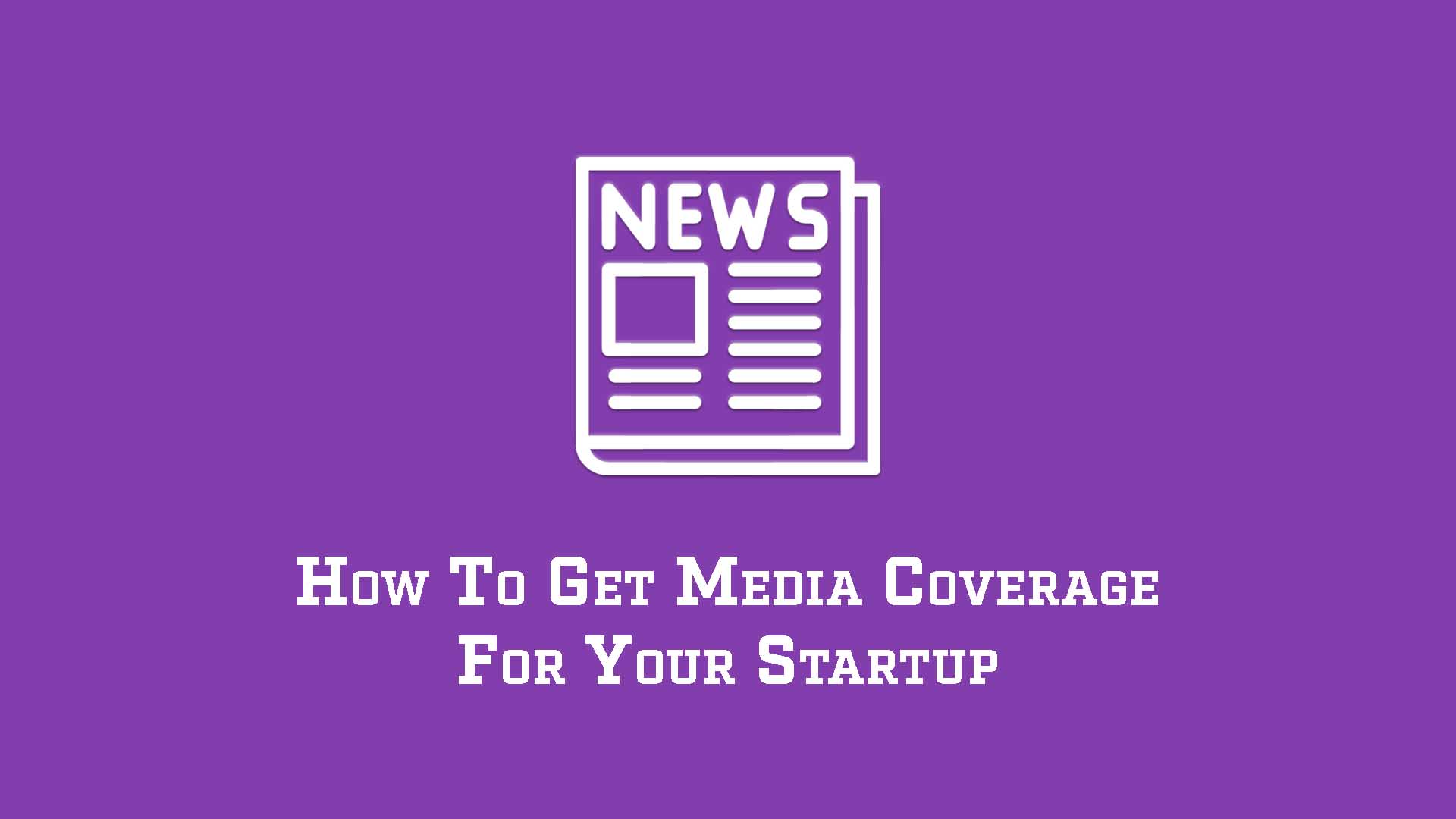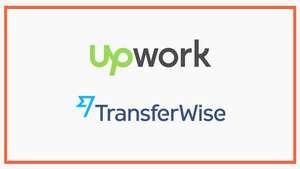
How to Get Media Coverage for Your Startup in 6 Steps
Media coverage is an extremely effective way to grow your brand, expand your reach, and generate leads for your company. If you are an entrepreneur, you may have already considered, or even attempted, getting media coverage for your tech startup or small business.
However, you may also have discovered that getting attention from the press is difficult. Journalists and bloggers receive countless emails every day from business owners hoping to get their story heard. You need to stand out from all the noise.
But with the correct planning and execution, you’ll find it is perfectly possible to get media coverage for your brand. Over the years, I have managed to get articles in outlets ranging from small tech blogs all the way up to giant publications such as the BBC and New York Post.
This guide is written from personal experience working in communications and at a technology startup; following the below steps, you will be able to overcome the challenge of getting media coverage.
Table of Contents
Step 1 – Craft Your Story
The first thing to consider when planning for a media campaign is the following question: what is your story?
It is important to remember that journalists are in the business of storytelling. If you are not able to give them an interesting story, you will have a hard time getting press coverage.
Speaking from experience, it is easy to fall into the trap of thinking your own business or product is so superbly interesting, dynamic, and newsworthy that journalists will be begging to write articles about you.
Unfortunately, that is almost never the case. Small businesses have to work hard to get press attention. They need to pitch and sell their story to bloggers and journalists. To do this successfully, you need to think about how a) why your business is special and b) what the event is that makes it newsworthy.
Why is your business special?
Consider how your product and your business stand out. To do so, think of all the reasons you are different to your competitors and why you believe your business needs to exist. You know your business best, and you’ll have to come up with your own, but here are some examples of things that might differentiate your company:
- Disrupting a certain sector with a new approach
- Addressing a problem that is itself getting a lot of media attention (e.g. COVID-19!)
- An exciting new technology developed in-house
- Eco-friendly credentials (especially compared to the competition)
What event makes your business newsworthy?
Next, think about what event is driving your story. Normally, you will need some sort of event to take place in order to make the news; your company simply existing won’t be enough. Here are a few examples of newsworthy events:
- A product launch
- A big hire (e.g. new CEO)
- Fundraising
- Signing a big deal
- Impressive revenue figures
- Charitable activity
Time your press campaign around an exciting business activity, and you will find crafting your story becomes much easier.
Step 2 – Set Goals
Once you have crafted your story, the next step is to think about what you want to achieve with your media campaign.
It is important here to manage expectations and set realistic goals that are aligned with your wider business objectives. Doing so will help you execute an effective, targeted media campaign. Here are some examples of goals for your campaign:
- Drive traffic to your website
- Generate leads
- Create awareness in the investor community
- Build your brand
Your goals will determine which types of publication you should be targeting. For example, if you want to raise awareness of your business in the investor community, you may be better off targeting publications that cover corporate startup news such as fundraising or executive hires. If you want to drive traffic to your e-commerce website, consumer-focused blogs are a better bet.
Many of these goals, such as traffic to your website, will be measurable, which in itself is very valuable. Others, such as building your brand, have immense long-term value but are trickier to track.
Step 3 – Ready Your Press Kit
You’ve crafted your story and you’ve outlined your goals. Now it’s time to put that work together with your press kit. Here are the essentials:
- Press release
- Videos and images
- A shared folder with the above
Let’s go through each part.
Press Release
A press release is an essential tool for your media strategy. In it, you must coherently put together the story you prepared in Step 1.
Start with an attention-grabbing headline that neatly summarises the content of the release itself. In the headline, you should mention your company name and what it does. Follow that up with a few words outlining what the news is, making sure that it doesn’t get too long. Here is a totally made-up example:
Greentech Startup EcoCarrier Signs Compostable Drink Container Deal with Pepsi
Near the top of the release, include the date, the location of your company, and contact details.
In the opening paragraph, explain exactly what the news story is and why it is important. Explain who is involved and when and where the news is happening. The opening paragraph is crucial; it must be clear, to the point, and engaging.
In the middle section, move on to some background on your company and the things you have achieved already. Here, you can also include a quote from the company CEO or a senior person involved in what’s going on. Quotes should provide useful information or analysis of the content of the release.
Finish off with any other details that are relevant to the story. The press release should not be too long. A full A4 page is plenty.
Consider the language you use throughout. If your target audience – i.e. both the journalist receiving the statement and the readers of their publication – understands technical subjects, use technical language. If they do not, then keep it clear and simple. Know your audience.
If you are targeting a number of regions, have a version of your press release for each. You don’t want to send a statement in British English to a blogger based in New York, for example.
Videos and images
You need great content to accompany your press release. Of course, creating great image and video content comes at a cost, but the more you have, the better. High-quality images and videos of your company, products, and employees help tell your story and offer value to journalists and bloggers who will include that content in their articles.
Shared folder
This is often referred to as a ‘press kit’. The idea is to put the press release and all content relevant to journalists in one place, ideally a shared folder that will also be readily available from your website. You want to make it as easy as possible for prospective writers to access the information they need.
Step 4 – Create a Media Target List
Once you have considered what you want to achieve with your media campaign and you have the materials ready, it is time to build a list of journalists and bloggers to target.
The key to this step is to identify the right people. It is no use pitching your story to a proptech journalist if you are a retail business, for example. By finding the right targets, you will massively improve your chances of getting their attention.
This will require you to read widely. Stay on top of your industry’s news cycle and closely follow coverage on your competitors. Social media, and in particular Twitter, is a valuable tool that will give you insight into who is interested in what.
To create your media target list, find at least 20 journalists and bloggers that are interested in your industry. Some argue that less is more, but when it comes to media targeting, I disagree. Particularly for smaller, unknown brands, you improve your chances of getting press coverage simply by sending out your pitch more widely.
Put your selected targets into a spreadsheet with their email addresses and Twitter handles. Other details that can be helpful are job titles, phone numbers, and links to journalist bios, where applicable.
Beware, though – you will not always easily find journalists’ contact details. Often, it will require a lot of digging and sometimes some guesswork. Use tools to help you - Hunter.io, for example, scrapes websites for email addresses.
Sometimes, you won’t be able to find the email address you want. If all you can find is a generic email – such as tips@publication.com – you should still pitch to these. Just make sure the outlet covers your sector.
As in the above step, it is important to be realistic when you build your media target list. Of course, it would be great to feature in a New York Times editorial, but that is probably not an achievable goal if you are reading this article.
Finally, do not undervalue smaller blogs. Pay attention to smaller publications with a readership closely aligned to your target customers or audience.
Step 5 – Create an Email Pitch
In most cases, the most effective way to get your press release to journalists is via email. But, as noted above, journalists receive hundreds of emails a day from PRs and founders who are just as keen as you to get noticed.
To grab a journalist’s attention, you need a punchy, descriptive subject line. You have a couple of seconds to grab their attention, so the subject line must be relevant and informative.
Once the email has been opened, you need to get to the point quickly. It can help, however, if you indicate that you are familiar with the writer’s work – this will give some brief context on why your story is relevant.
Following that, get to the point, fast. And keep it brief.
Below is a made up example of an effective email pitch:
Subject: Startup Signs Compostable Bottle Deal with Pepsi – Press Release
Dear Mary,
I enjoyed your recent article on plastic waste disposal and have for some time been following your writing on the plastic crisis more broadly.
Perhaps you might be interested in what we’ve been up to recently. I work for EcoCarrier, a startup that has designed a new type of compostable bottle that biodegrades in just 2 months and without leaving behind any microplastics or other contaminants. We’ve just signed a 5-year licensing deal with Pepsi, who from January will use our bottle in several of their lines. We are really excited about the potential of this product.
You can find our press release on the deal and some video and image content of the bottles at this link, if interested.
Let me know if there is anything I can do to help – I’d be delighted to chat further about the above.
Best,
Max
No need to go into too much detail in the email – that’s what your release is for. Just include enough information for the journalist to become interested in your news story and investigate your press pack.
Step 6 – Get Going and Track Progress
After you have crafted your company story, set your goals, prepared your press kit, built a media target list, and created an email pitch, the final step is simply to fire away.
Send your emails at reasonable times to avoid them getting ignored; it isn’t helpful for a journalist to receive your pitch at 10pm on a Saturday night.
It will benefit you greatly to note clearly who you have contacted and on what date. Then you can follow up – emails do get lost or forgotten about. But don’t do so more than twice, and with several days to a week between each email. If the blogger doesn’t reply to the third email, assume they are not interested.
Finally, keep track of the articles that arise as a result of your campaign. Monitoring tools such as Google Alerts can help you do this, as you may not always be alerted to an article by the writer themselves.
When you start your next campaign, you can go back to media contacts that wrote about you last time. You’ll find that the second or third time round, they will share their attention far more easily.
And that’s it! We hope you will find this guide valuable. Please do share your thoughts in the comment section.




Comments